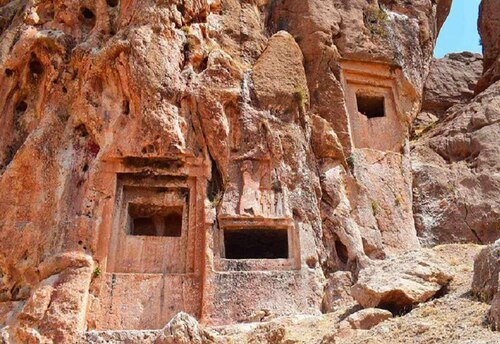According to our ancestors in Kurdistan, dead bodies were not very important and even unclean, so the way the body was buried and how the body was destroyed was not so important. The main effort of the people at that time was to minimize the damage to nature and normal life. For this reason, many graves in Kurdistan are carved in rocks and mountains and we call them Gordakhma.
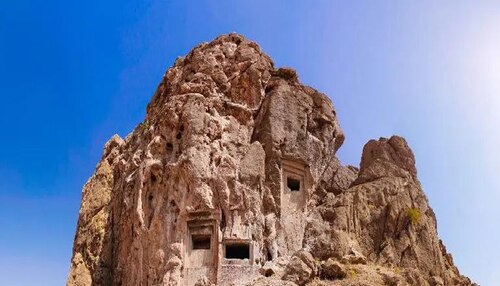
The graves of Ishaqwan, Skawan, or Farhadtash are three graves of the Median period in Kermashan province in the East part of Kurdistan. These graves, which are believed by most archaeologists to be the oldest stone carving graves in the East part of Kurdistan, are located 25 kilometers southwest of Harsin town in Kermashan province. The graves of Ishaqwan were carved in the heart of a high rock and located near the village of Ishaqwan; that is why they are called and recorded as Ishaqwan Cemetery. These graves were registered as historical monuments in 2012 and are considered part of Kurdistan's historical heritage.
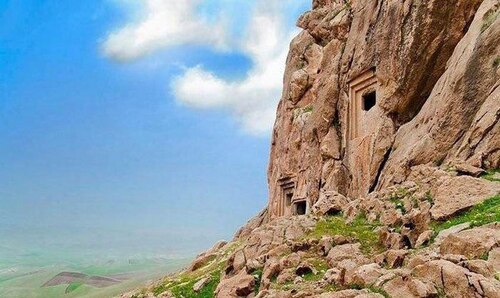
Three graves are carved in the heart of a high rock, the grave on the right above the others. The depth of the grave on the left, carved in the shape of an arc, is about 85 cm and the width is 2 meters and 10 cm. The middle grave is 1.75 by 2.10 m. Around all three graves are vessels carved in a square shape.
The graves of Ishaqwan, like all the graves of Kurdistan, belong to the Median period; one thing that shows this characteristic is their architectural style. The graves of the Median period are divided into three types according to their doors and gates. Graves with free pillars, such as the tomb of Fakhriga in Mahabad; graves with columned and half-columned doors carved in the heart of the mountain; graves without columned and half-columned doors, like all the graves in the lower Mukriyan region of Kurdistan, including Ishaqwan.
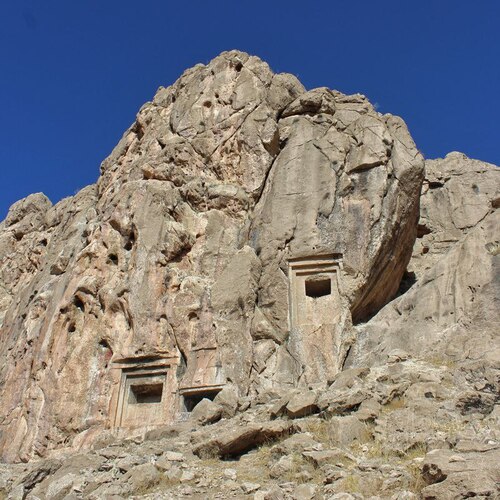
Above the middle grave of Ishaqwan, unlike the graves on the left and right, which have no pattern and design, is carved the figure of a man standing. This man is dressed completely with his hands raised in prayer; there is a fireplace in front of him. Some archaeologists believe that the graves of Ishaqwan were a more advanced form of the graves of the Urartu period.
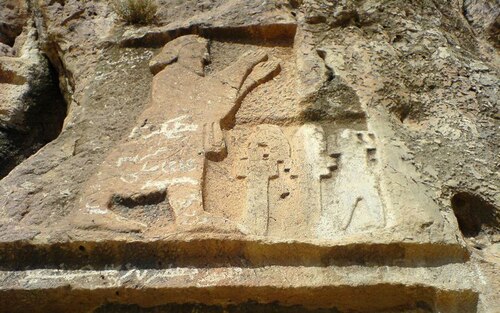
The architecture of the graves varied depending on who the deceased was and how important it was. Unlike the tombs of the Achaemenid and Persian periods, the owners of these graves are unknown and no one knows what historical figures they belong to. Due to the theft of these graves and the fact that no remains have been left, very little information is available about how the dead were buried and what was inside these graves.
According to the people of this region, these graves were carved by Farhad and are related to the famous story of Shirin and Farhad, so they are called Farhadtash (carved by Farhad).
The site of the graves of Ishaqwan is one of the historical monuments of Kurdistan in Kermashan and is known as the oldest graves in the eastern part of Kurdistan. This cemetery is also known as a tourist monument and every year thousands of people from Kurdistan and abroad visit this historical monument of Kurdistan.
